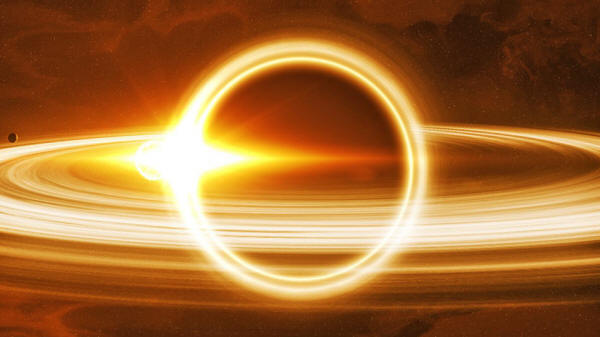|

by Ivan Petricevic
September 05, 2017
from
Ancient-Code Website

A truly GIANT
black hole - around 100,000 times
bigger than our Sun - has been found at the center of the Milky Way.
It is the second largest
black hole ever seen in the Milky Way Galaxy after the
supermassive black hole Sagittarius A*.
The new, monstrous black hole, was discovered by Japanese
astronomers hiding in a toxic gas cloud located some 25,000
light-years from Earth.
The Black Hole is located
around 195 light-years from the center of the Milky Way.
The discovery took place as astronomers studied the movements of
toxic cloud gases with the
ALMA (Large Millimeter/submillimeter
Array) telescope, composed of 66 radio telescopes and located in the
Chilean mountain range of Atacama.
Research showed that the molecules of the cloud were being kidnapped
by strong gravitational forces, which could be explained by a black
hole in a surrounding area of 1.4 billion kilometers.
Although the discovery has not yet been confirmed, other
observations have captured radio waves indicating that there may be
a black hole in the center of the toxic cloud and this could be the
first intermediate mass black hole found in the Milky Way, reported
Nature Astronomy.
"Based on the careful
analysis of gas kinematics, we concluded a compact object with a
mass of about 100,000 solar masses is lurking in this cloud,"
Tomoharu Oka, a Japanese astronomer in charge of published
research said.
Intermediate-mass black
holes were believed to exist but have never been identified until
now say experts.
It is believed that supermassive black holes are one of the
most essential parts to the creation of galaxies, stars - and even
life itself.
According to scientists each of the black holes is around half a
percent of the size of the host galaxies size, which suggests that
these black holes are in fact the driving force behind galactic
evolution.
The new discovery was detailed in the Journal Nature Astronomy
(Millimetre-Wave
Emission from an Intermediate-Mass Black Hole candidate in the Milky
Way) and offers important insight into how supermassive
black holes - like the on recently discovered - at the center of our
galaxy were created.
Despite the fact that black holes reside in all galaxies we aren't
really sure as to how they get so big.
Experts have trouble identifying black holes in the universe -
mostly because they are completely black, hence BLACK holes -
but they can see the effects black holes cause.
Black Holes are regions in space that have very powerful
gravitational fields that allow them to absorb all light that passes
near them, and they don't reflect anything.
Tomoharu Oka said the newly discovered black hole could be
the nucleus of an old dwarf galaxy that was cannibalized during the
formation of the Milky Way billions of years ago.
Professor Oka thinks that in time this intermediate mass black hole
will move towards Sagittarius A* and that the already supermassive
black hole will merge the newly discovered one, becoming even bigger
than it is now.
"One possible
scenario is intermediate-mass black holes (IMBHs)
- which are formed by the runaway coalescence of stars in young
compact star clusters - merge at the center of a galaxy to form
a supermassive black hole.
Although many
candidates for IMBHs have been proposed none is accepted as
definitive. Recently we discovered a peculiar molecular cloud
near the center of our Milky Way galaxy," said professor Oka.
So far, they are all
indications and it has not been possible to confirm the finding or
its importance although the investigation has opened new fronts to
find out the origin of these elements.
|


